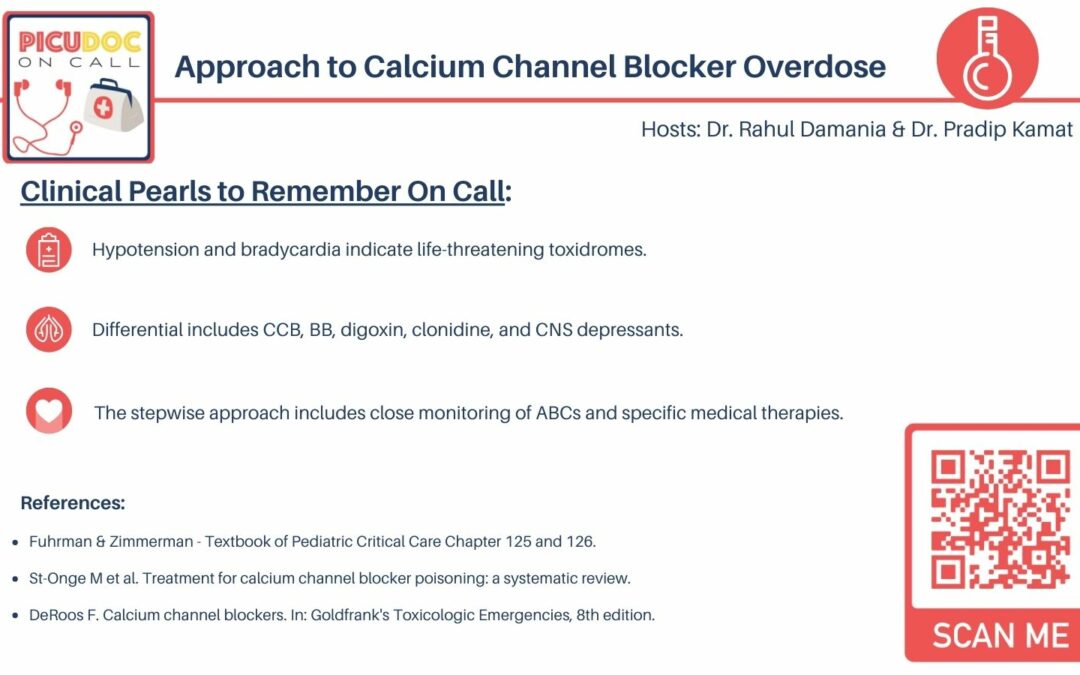Show Introduction
- Welcome to PICU Doc On Call, a podcast dedicated to current and aspiring intensivists.
- Hosted by Dr. Pradip Kamat and Dr. Rahul Damania
Case Presentation
- A 14-year-old female with a history of depression and oppositional defiant disorder presents with dizziness, slurring speech, and is pale appearance.
- The mother noticed symptoms of dizziness, stumbling, and sleepiness.
- The patient had a prior suicide attempt.
- Vital signs: HR 50 bpm, BP 75/40, GCS 10.
- The initial workup reveals hyperglycemia, and she is stabilized and admitted to the PICU.
Key Aspects of Ingestion Work-up
- History and physical exam are crucial.
- Stratify acute or chronic ingestions.
- Consider baseline medications and coingestants.
- Perform initial screening examination to identify immediate measures for stabilization.
Diagnostic Studies
- Pulse oximetry, continuous cardiac monitoring, ECG, capillary glucose measurement.
- Serum acetaminophen, ASA levels
- Consider extended toxicology screen.
Differentiating CCB vs. Beta-Blocker Overdose
- ECG findings: PR interval prolongation and Bradydysrhythmia suggest CCB poisoning.
- Hyperglycemia in non-diabetic patients may indicate CCB overdose
Approach to CCB Overdose
- Initial resuscitation and stabilization
- ABC approach
- Consult Poison Control Center
- Empiric use of glucagon, IV fluids, and vasopressors
- Consideration of orogastric lavage and activated charcoal
Specific Medical Therapies
- Vasopressors: norepinephrine/epinephrine infusion
- Atropine for bradycardia
- IV calcium salts to overcome cardiovascular effects
- High-dose insulin and dextrose for myocardial function
- Investigational therapies: methylene blue, lipid emulsion
Procedures
- Transvenous pacemaker placement if needed
- ECMO in refractory hypotension
Key Takeaways
- Hypotension and bradycardia indicate life-threatening toxidromes.
- Differential includes CCB, BB, digoxin, clonidine, and CNS depressants.
- Stepwise approach includes close monitoring of ABCs and specific medical therapies.
Thank you for listening to PICU Doc On Call. We would love for you to share your feedback, subscribe, and review our podcast.
Visit picudoconcall.org for more information and resources.
Stay tuned for our next episode!
References
- Fuhrman & Zimmerman – Textbook of Pediatric Critical Care Chapter 125 and 126.
- St-Onge M et al. Treatment for calcium channel blocker poisoning: a systematic review.
- DeRoos F. Calcium channel blockers. In: Goldfrank’s Toxicologic Emergencies, 8th edition.

